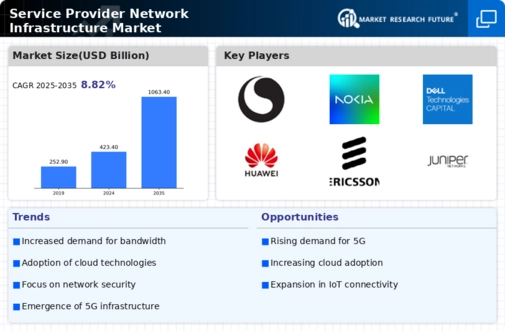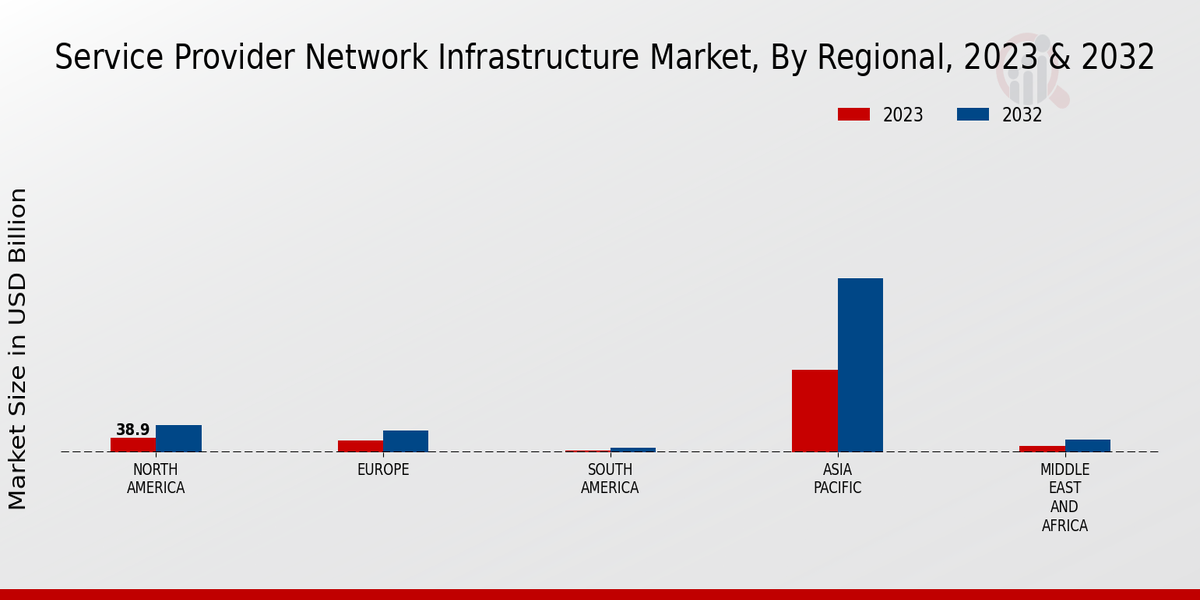Cloud Computing Adoption
The rapid adoption of cloud computing is reshaping the Global Service Provider Network Infrastructure Market Industry. Organizations are migrating their operations to the cloud to enhance flexibility, scalability, and cost-efficiency. This shift necessitates robust network infrastructure capable of supporting high data transfer rates and secure connections. As the market is expected to grow from 423.4 USD Billion in 2024 to 1063.4 USD Billion by 2035, service providers are likely to invest in advanced networking technologies, such as Software-Defined Networking (SDN) and Network Functions Virtualization (NFV), to meet the evolving demands of cloud-based services.
Expansion of 5G Networks
The rollout of 5G networks significantly influences the Global Service Provider Network Infrastructure Market Industry. With its promise of ultra-low latency and high bandwidth, 5G technology is expected to transform various sectors, including healthcare, automotive, and smart cities. As of 2024, the market is valued at 423.4 USD Billion, with projections indicating that it could exceed 1063.4 USD Billion by 2035. This growth suggests that service providers are likely to invest heavily in upgrading their infrastructure to support 5G capabilities, thereby enhancing user experiences and enabling innovative applications.
Increased Focus on Cybersecurity
The growing emphasis on cybersecurity is a notable driver of the Global Service Provider Network Infrastructure Market Industry. As cyber threats become more sophisticated, service providers are compelled to enhance their network security measures. This trend is particularly relevant in sectors such as finance, healthcare, and government, where sensitive data is at risk. The market's expansion, projected to reach 1063.4 USD Billion by 2035, suggests that investments in cybersecurity solutions, including firewalls, intrusion detection systems, and encryption technologies, will be critical for service providers to safeguard their networks and maintain customer trust.
Rise of Internet of Things (IoT)
The proliferation of Internet of Things (IoT) devices is a key driver of the Global Service Provider Network Infrastructure Market Industry. As more devices become interconnected, the demand for reliable and scalable network infrastructure intensifies. This trend is evident in various sectors, including manufacturing, agriculture, and smart homes, where IoT applications are becoming increasingly prevalent. The market's growth trajectory, with a projected CAGR of 8.73% from 2025 to 2035, indicates that service providers must adapt their networks to accommodate the vast amounts of data generated by IoT devices, ensuring seamless connectivity and data processing.
Increasing Demand for High-Speed Connectivity
The Global Service Provider Network Infrastructure Market Industry experiences a surge in demand for high-speed connectivity, driven by the proliferation of data-intensive applications. As businesses and consumers increasingly rely on cloud services, video streaming, and online gaming, the need for robust network infrastructure becomes paramount. In 2024, the market is projected to reach 423.4 USD Billion, reflecting the urgency for service providers to enhance their offerings. This demand is likely to propel investments in fiber-optic networks and 5G technology, which are essential for delivering the high-speed connectivity that modern applications require.




















Leave a Comment